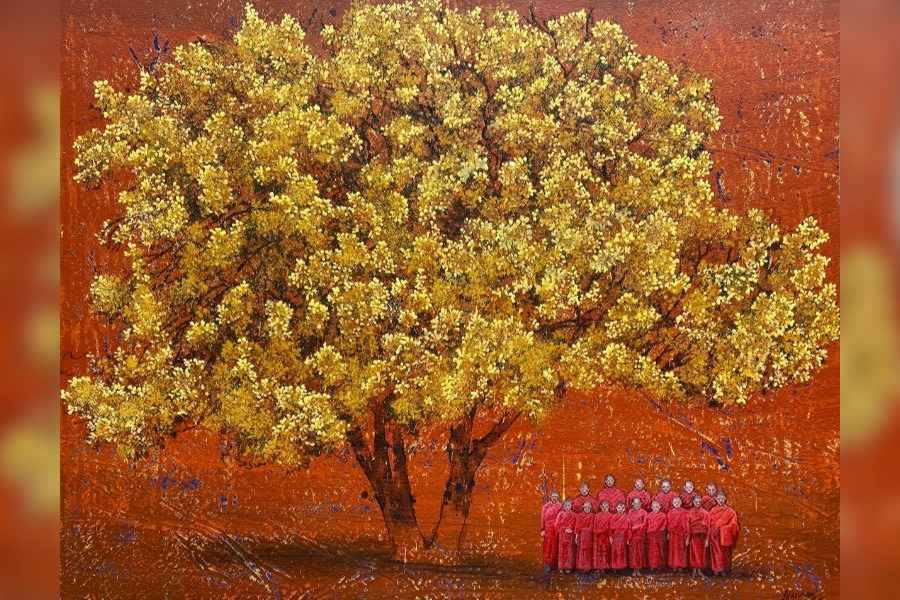At this time of the year, when New Delhi offers a plethora of well-curated exhibitions as a run-up to the India Art Fair, creating a stand-out act is a rather difficult proposition.
Gallery Ragini’s latest group show, ‘Expanding Horizons: Ek Aur Duniya’, however, pushed the envelope by presenting works by some of India’s most important contemporary artists, affording a rare glimpse of the finest art by mid-career and young Indian masters, all at one place.
Curated by Ina Puri, the exhibition presented new works by artists around the theme of hope. “This show is a salute to the undying human virtue of believing in hope, even in the face of hopelessness, conflict and war around the world. Despite all this, we have welcomed the new year with hope, with the idea of living it up again, doing it right, creating a new world, ‘ek aur duniya’… that is utopia, the hope of a better tomorrow,” says Puri, who worked with the artists on this idea, travelling around the country, and even to Colombo, visiting their studios as each prepared a new work for the show.
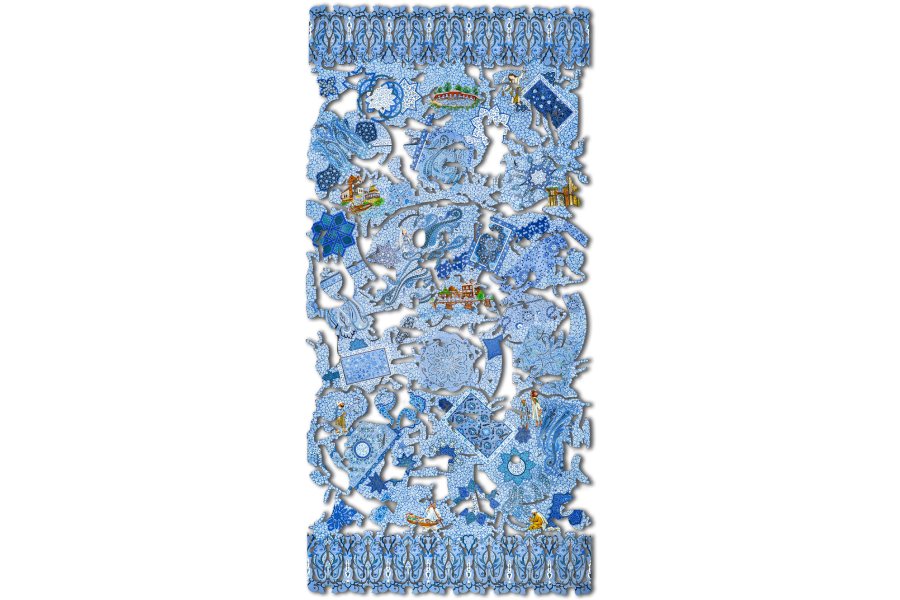
Veer Munshi’s ‘Vetasta (Jhelum)’
The exhibition, held at Bikaner House recently, showcased works by artists such as Anant Joshi, Arinjoy Sen, Bappaditya Biswas, Debasish Mukherjee, GR Iranna, Gigi Scaria, G. Reghu, Gurjeet Singh, Jagannath Panda, Manjunath Kamath, Nataraj Sharma, Pooja Iranna, Puneet Kaushik, Ravikumar Kashi, Riyas Komu, Shobha Broota, Tilak Samarawickrema, Veer Munshi and Vivek Vilasini.
By presenting this breadth of contemporary Indian art, Gallery Ragini initiates a bigger weight for contemporary art in its programming in its landmark 20th year.
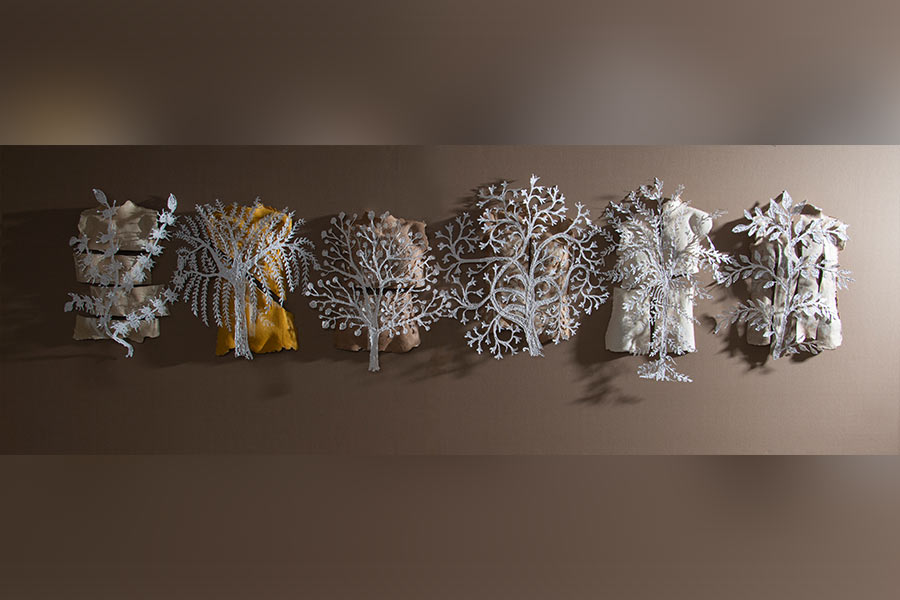
A work by Ravikumar Kashi
Nidhi Jain, director of Gallery Ragini, says, “Even as we expand our own horizons to include more of contemporary art in our repertoire, we will continue to nurture, promote and preserve the rich cultural heritage of the country, by supporting traditional artists in the deep interiors. As for contemporary artists, most of whose works we showed in this exhibition have been part of our journey for several years. We started in 2005 when many of these artists were themselves at the start of their careers and today, have grown to become some of the most important artists of the country.” The exhibition also introduced Jain’s daughters, Ragini and Radha, as next-gen gallerists ready to turn the wheel further.
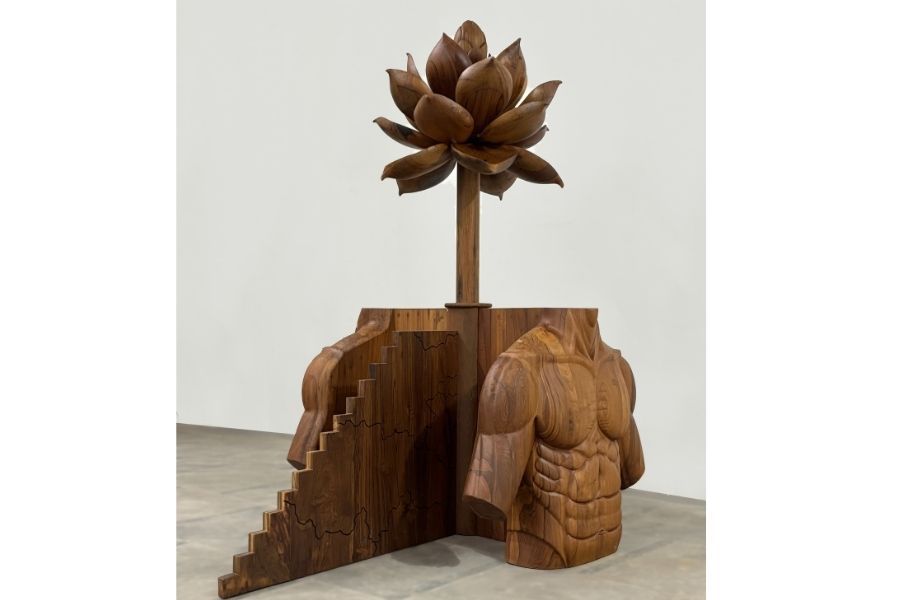
Riyas Komu’s wood sculpture of the lotus flower
Artists explored the idea of ‘a world of hope’ in myriad ways and in different mediums, all of which underscored the depth of the curation. Riyas Komu’s wood sculpture of the lotus flower, for instance, employed the national flower of India standing as a metaphor for hope, whereas textile designer and artist Bappaditya Biswas’s intricate textile-painted work signified hope for reviving the elephant trail in West Bengal-Assam. “Bappa was born in Jalpaiguri and grew up on a tea estate and is therefore sensitive to the threat to the elephant habitats, where humans and elephants have come in grave conflicts,” shares Puri.
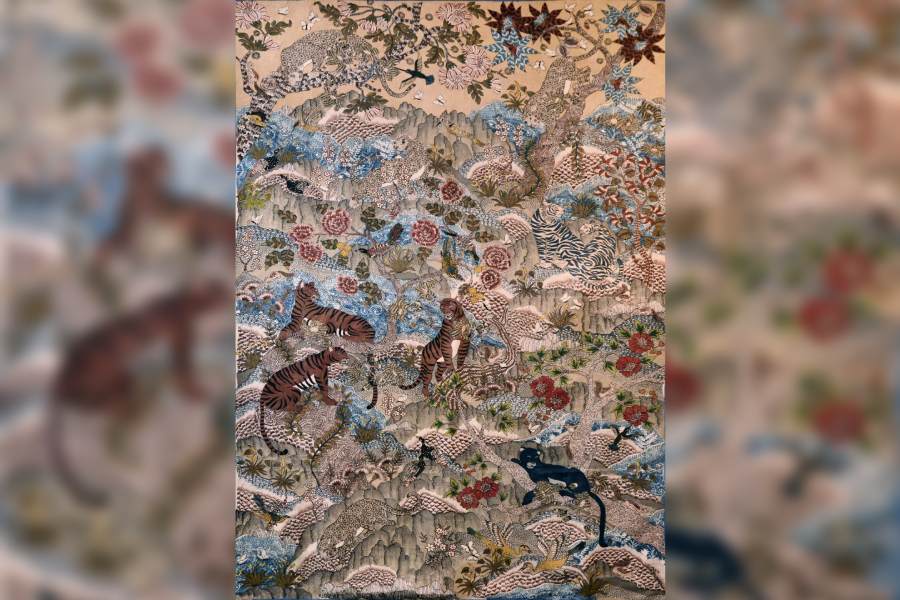
Bappaditya Biswas’s intricate textile-painted work signified hope for reviving the elephant trail in West Bengal-Assam
Veer Munshi’s Vetasta (Jhelum), a majestic hand-painted MDF wood work, featuring blue cutouts, evoked the glory of river Jhelum of his native Kashmir, through interlocked geometric patterns characteristic of the state’s architectural heritage. “He has focused on Jhelum for hope in a scenario that otherwise seems without a solution,” explains Puri. GR Iranna’s acrylic on canvas, Silent Portrait, featuring a wholesome and blooming yellow tree, under which stands a group of monks, screamed positivity with its very palette. Vivek Vilasini’s Include Me Out III, an archival print on paper work, comprised nearly 400 photographs taken individually, and then pasted on the picture of a temple façade, denoting a sense of happiness in community life.
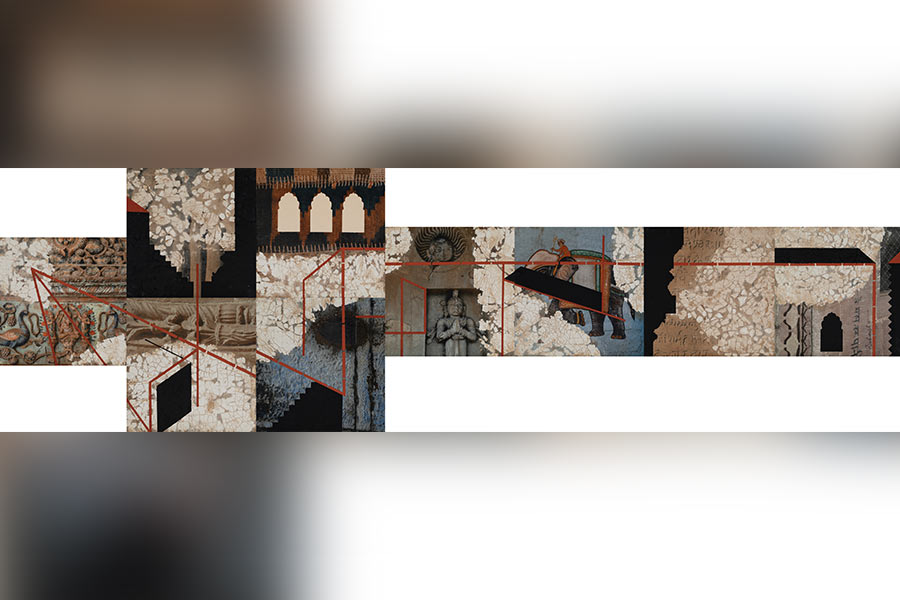
‘Landscape of Memories’
The most outstanding aspect of the exhibition was the range and variety of mediums used by artists to express a central concept. There were sculptures, installations and works in wool and cotton, attesting to the immense churn of creativity running through the community of Indian artists who are ready to advance to the high standards set by the preceding generations of Indian modernists.
Archana Khare-Ghose is a New Delhi-based arts journalist.
